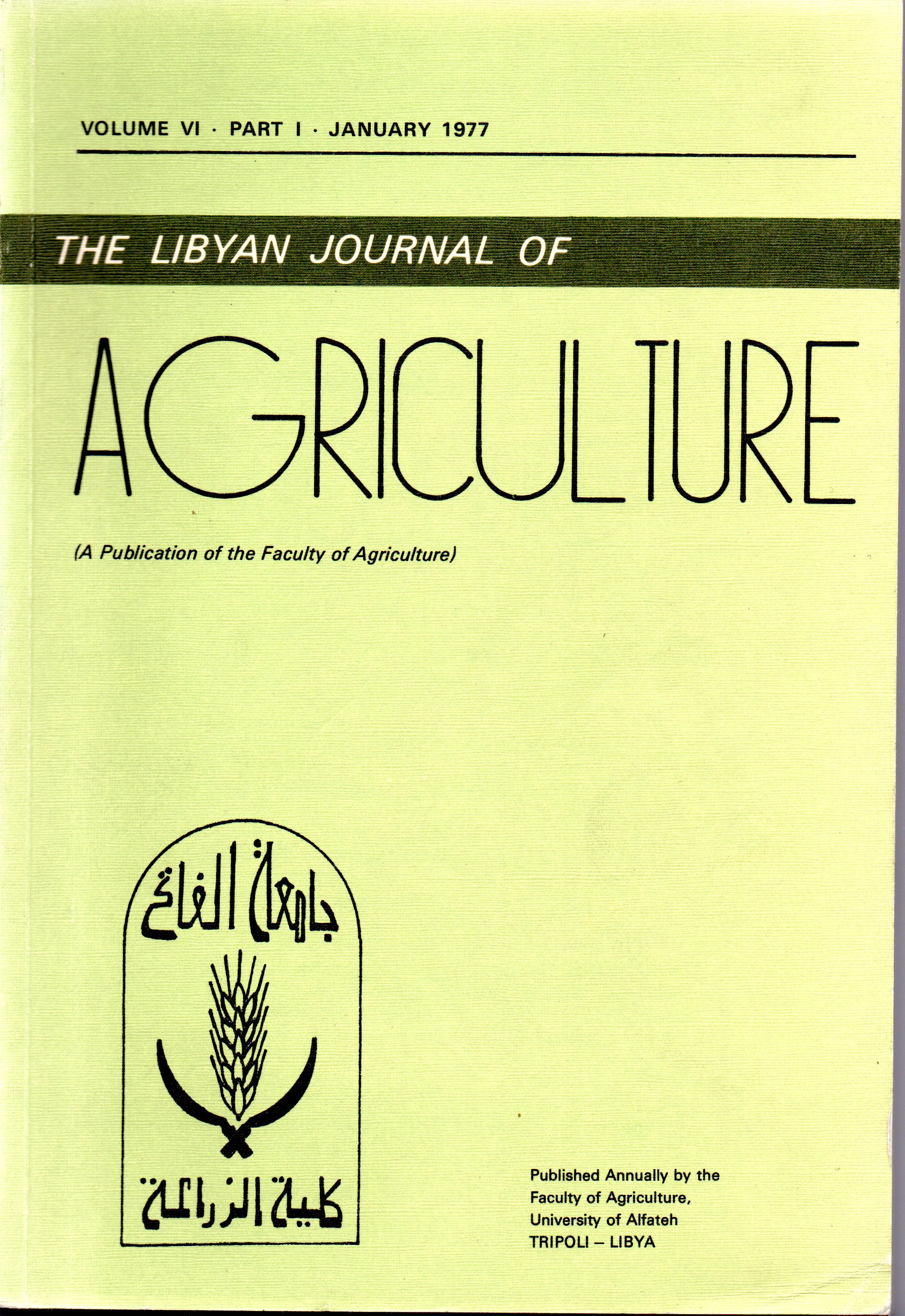The Effect of Tillage and Planting Methods on Growth, Weed Population, and Yield in Semi-Dwarf Wheat (Triticum aestivum L.)
Main Article Content
Abstract
A field experiment was conducted at the Faculty of Agriculture Farm, Alfateh University, Tripoli, L.P.S.A.J., in the 1975-1976 season. The objective of thisexpen-ment was to study the combined effect of three planting methods (broadcast, manual drill, and mechanical drill) and six tillage treatments (no-tillage, line cultivator, disk harrow. moldboard plow, disk plow, and rotavator) on growth, weed population, yield, and yield components in the semi-dwarf wheat cultivar ‘Sidi Misri 1’,
In general, the tillage treatments had highly significantly increased the number of seedlings/m2 (or plant density), when compared with the control (no-tillage). The highest plant density was obtained from the disk plow and the lowest from the no-tillage treatments. Planting v ah the mechanical drill gave the highest plant density while the broadcast method result 1 in the lowest number of seedlings/m2. A slight but significant enhancement occurred in the heading date as a result of the disk and moldboard plow treatments. The planting methods did not affect the heading date. Similar results were obtainc j in the case of plant height. It was concluded that tillage by disk plow and/ or rotavator may be preferred in seedbed preparation for increasing plant density and improving the growth of wheat under Tripoli conditions. Moreover, planting of wheat should be done by mechanical grain drill for the same reasons.
The fresh weight of weeds during vegetative growth (4-months old) and at maturity (6-months old) and the dry weight of weeds during vegetative growth were more significantly decreased by tillage with the rotavator, disk plow, and moldboard plow than by the disk harrow and tine cultivator. There were more weeds in the case of the broadcast method than in the other two methods of planting. It was observed that the amounts of weeds were clearly decreased at maturity which was very important in affecting the wheat yield and its components in this study.
The total yield (grain plus straw) and grain and straw yields were more significantly increased by the tillage treatments than by the non-tillage practice. The highest mean yields resulted from rotovation and plowing with disk and moldboard plows. No-tillage gave the lowest yields. These yields were also significantly increased by the mechanical drill method. Consequently, it was concluded that tillage with either disk plow and/or

